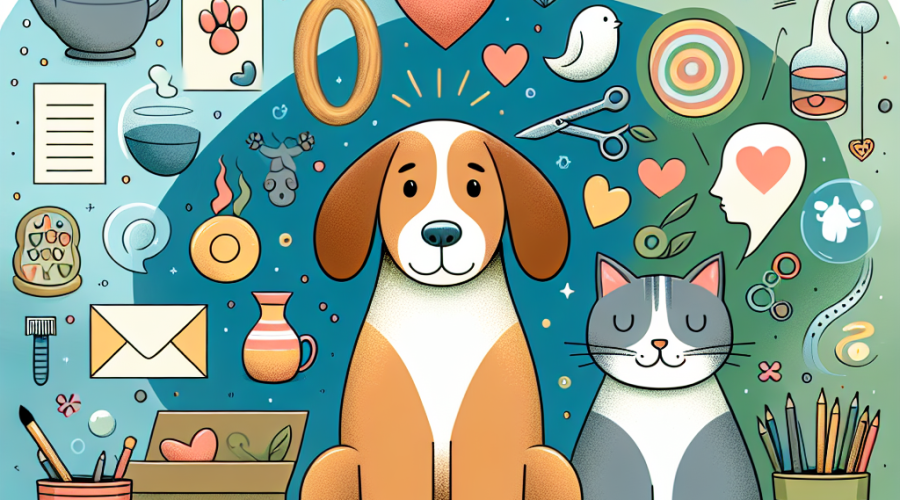Eradicate Pet Anxiety with These Simple Solutions
As pet owners, we’ve all seen those big, sad puppy eyes or the way our feline friends can pace the room when the fireworks start banging outside. It tugs right at the heartstrings, doesn’t it? Pet anxiety isn’t just a small hiccup in their day; it’s a real concern that can affect their health and happiness. But fear not! There are simple solutions at hand to help your fur babies feel calm and collected once again.
Understanding the root of anxiety in pets is like trying to solve a puzzle without the picture on the box. It can be anything from separation anxiety, loud noises, to changes in their environment. Recognising the signs is step one. Does your dog destroy the sofa the minute you leave the house? Or perhaps your cat hides under the bed when guests come over? These are tell-tale signs your beloved pet might be dealing with anxiety.
Creating a safe space for your pet is as essential as having a cozy nook for yourself after a long day. This could be a quiet corner of the house with their favourite bed, toys, and maybe even an item of clothing that smells like you. This personal haven can be a game-changer for pets when they feel overwhelmed.
Exercise isn’t just great for keeping your pet physically fit; it’s a fantastic way to burn off some of that anxious energy. A tired dog is a happy dog, as they say. Regular walks, playtime, and mental stimulation can significantly reduce anxiety levels. For cats, interactive toys or simple things like cardboard boxes can provide hours of entertainment and stress relief.
Consideration of your pet’s diet is also something that shouldn’t be overlooked. Just like in humans, what your pet eats can affect their mood and behaviour. There are specific diets formulated for pets with anxiety that include ingredients known to promote calmness and well-being. Consulting with your vet about the best options can provide some dietary adjustments that might just make all the difference.
Training and socialisation play a crucial role in managing pet anxiety. For dogs, obedience training isn’t just about learning tricks; it’s about building a bond of trust and communication. Socialisation from a young age can also prevent anxiety by exposing your pet to various situations in a controlled and positive manner. Cats might not be taken for walks like dogs, but they can also benefit from positive interactions with different people and environments within the safety of their home.
Technology has given us gadgets and apps that can help manage pet anxiety. From calming playlists designed for dogs and cats to interactive cameras that let you watch and talk to your pet while you’re away, these tools can be incredibly effective. There’s even pheromone diffusers and collars for both dogs and cats that mimic the pheromones mothers produce to calm their offspring.
Holistic approaches such as aromatherapy and massage can also provide relief for anxious pets. Just like humans, pets can respond well to gentle touch and soothing scents. However, it’s important to use pet-safe products and consult with a professional to ensure you’re providing the best care possible.
Sometimes, despite our best efforts, professional help may be required. Veterinarians can offer medical solutions for severe cases of anxiety, and certified animal behaviourists can work with your pet to overcome their fears. It’s nothing to be ashamed of; seeking help is a sign of a caring and responsible pet owner.
In essence, eradicating pet anxiety is about understanding, patience, and a bit of creativity. From creating a safe space and ensuring proper exercise to considering diet and professional advice, there are numerous ways to help your furry friend. Remember, each pet is unique, so what works for one might not work for another. It’s all about finding the right combination of techniques that suits your pet’s individual needs.
Engaging with your pet, showing them love and reassurance, and being consistent with the solutions you choose will go a long way. After all, the ultimate goal is to ensure that our pets live a happy, stress-free life, and isn’t that what every pet owner wants? So, next time you notice those tell-tale signs of anxiety, you’ll be well-equipped with simple solutions to help your pet feel safe and serene once again.
FAQs
Q: What are some effective ways to help reduce my pet’s anxiety during thunderstorms?
A: Creating a safe space where your pet can retreat, like a quiet room with their favourite toys and bedding, can offer comfort. Playing calming music or white noise can also help mask the frightening sounds of the storm.
Q: How can I ease my pet’s separation anxiety when I leave the house?
A: Begin with short departures to gradually get your pet used to being alone and ensure they have engaging toys to keep them occupied. Consistency in your leaving and returning routine can also help reduce their stress.
Q: Can diet play a role in managing my pet’s anxiety?
A: Yes, a balanced diet enriched with omega-3 fatty acids and essential vitamins can support brain health and potentially reduce anxiety. Consult with a vet for recommendations tailored to your pet’s specific needs.
Q: Are there any natural remedies that can help calm an anxious pet?
A: Herbal supplements like chamomile and valerian root are known for their calming effects and can be a natural way to soothe pet anxiety. Always check with your vet before introducing any new supplements to your pet’s diet.
Q: How important is exercise in reducing anxiety in pets?
A: Regular exercise is crucial as it helps burn off energy, reducing stress and anxiety levels in pets. Tailoring the amount and type of activity to your pet’s age, breed, and health condition can maximize the benefits.

